Having recently moved here from the Gold Coast, a sleepy country town that thinks it’s a city, I find I just really need to get out of Sydney from time to time. Bowral was the target destination and the car of choice was Hyundai's Accent Sport.
The current generation of Hyundai’s smallest hatchback, the Accent has been on sale since 2011 and despite facing stiff competition from newer models, it remains the best-seller in the light car segment.
How does a hatch that’s changed very little over the years continue to sell well in a market, which continues to get tougher? I set out to find what’s appealing about it.
Saturday
I had an hour and a half road trip out to Bowral (115km south of Sydney), time to see how this city car handles highway cruising.
A decent multimedia system is essential for keeping yourself and your passengers entertained during the journey.
In the Accent, you’ll find a small 5.0-inch touchscreen with Bluetooth and Apple CarPlay. If you’re a Samsung user (like myself) you’re left wondering where the Android Auto is?
Android Auto is available, but needs to be requested at the dealer which will perform a 15-minute software upgrade to unlock this feature.
.jpg)
This was absent from our test car, along with a handful of other equipment that is standard on most vehicles in the segment.
For example, a reversing camera would be handy in a car with average rear visibility.
Rear parking sensors are a $272 optional extra, and were originally unavailable on ‘Pulse Red’ cars, due to issues with the colour matching.
On the plus side, there are some redeeming features such as the noise, vibration and harshness (NVH) levels inside the car. During my trip out to Bowral, despite typically average road surfaces, very little road noise infiltrated the cabin and having driven several of the Accent's rivals, it’s one of the quietest of the bunch.
Another positive is the 1.6-litre engine. The four cylinder produces 103kW/167Nm, which in this class, feels like a Ferrari.
.jpg)
Unlike some small cars, the Accent doesn't feel out of its comfort zone on the highway, there’s enough power throughout the rev-range to make overtaking easy.
Connected to the engine is a six-speed (torque converter) automatic with manual shifting. Last year the base model Accent was fitted with a Continuously Variable Transmission (CVT) auto, while the torque converter was reserved for the top-spec SR model.
As Hyundai has trimmed the range down to just the Sport, the CVT has been dropped in favour of the traditional auto while there’s also an optional six-speed manual.
There are four-wheel disc brakes compared to the usual combination of front discs and rear drum brakes of the competition.
Bowral was just what I had hoped for, picturesque and quiet. Just a pity it was soaking wet, like a summer's day in England. Given it was too wet and cold for this Queenslander, I headed back to Sydney, after a quick Macca’s run.
Sunday
After yesterday’s adventure, Sunday was set to be a lazy day with a few errands the only chores.
First stop was at our local supermarket to do the weekly shopping.
Zipping around the car park lot, it was obvious this Hyundai is best suited to driving through city streets and busy shopping centres.
The Accent’s small size allows it to fit into tight spots. The steering can feel heavy when switching from Reverse to Drive, but the rest of the time it’s light.
Walking back to the Accent with groceries in hand was a reminder that the exterior styling is best described as in-offensive.
Visually, the car has barely changed since 2011. Hyundai has clearly taken the conservative path with the styling.
.jpg)
It’s not an ugly car, but no one is going to look twice at it, not that anyone is buying this car for its rockstar looks.
What is attractive about the Accent is a boot that makes objects disappear like a magician’s pocket.
A lot of people rave about the boot in the Honda Jazz, which is rated at 354 litres (VDA) with the rear seats up. Yet, there's 370 litres (VDA) of load space on offer in the Accent, enough to easily swallow my shopping and a massive bag of clothes ready for the charity collection bin.
As already mentioned, the Accent range consists of one car, the Sport, which is available as a hatch or sedan.
Pricing for our test car is $17,490 (before on-road costs) placing the Sport against some rivals with equipment like sat nav and auto emergency braking (AEB).
One plus for the Accent is the full-sized alloy spare tyre. The only other car in this class with a full-sized spare is the Volkswagen Polo, but that’s a steel wheel.
_0.jpg)
The official average fuel consumption for the Accent auto is 6.6L/100km, by the end of the weekend I had recorded 8.2L/100km. This isn't class leading, especially when compared to what some larger cars can hit.
Hyundai Accent 2018: Sport
| Engine Type | Inline 4, 1.6L |
|---|---|
| Fuel Type | Unleaded Petrol |
| Fuel Efficiency | 6.6L/100km (combined) |
| Seating | 5 |
| Price From | $11,990 - $15,950 |
| Safety Rating |
|
Verdict
It’s hard to escape the fact that this generation Accent is feeling its age, especially when there isn’t a reversing camera, and Android Auto needs to be installed. However, Hyundai’s smallest hatch has a zippy engine, a comfortable interior and loads of boot space. These are the reasons the Accent Sport is still the best selling car in the light car segment.
Is the Hyundai Accent enough car for you? Or are you attracted to its better equipped rivals? Let us know in the comments.
Pricing Guides

Range and Specs
| Vehicle | Specs | Price* |
|---|---|---|
| Sport | 1.6L, Unleaded Petrol, 6 SPEED AUTOMATIC | $11,990 - $15,950 |
| Sport | 1.6L, Unleaded Petrol, 6 SPEED MANUAL | $10,230 - $14,080 |





.jpg)
.jpg)
.jpg)
.jpg)
.jpg)
.jpg)
.jpg)
.jpg)
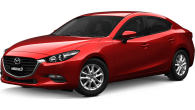
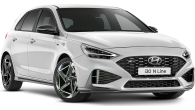
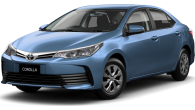

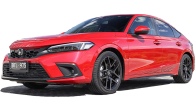







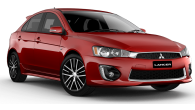

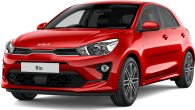


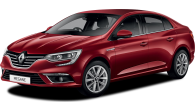
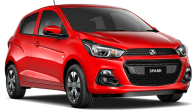
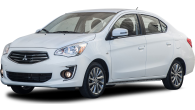






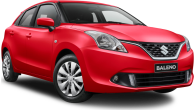





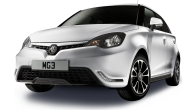

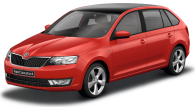
.jpg)
.jpg)




